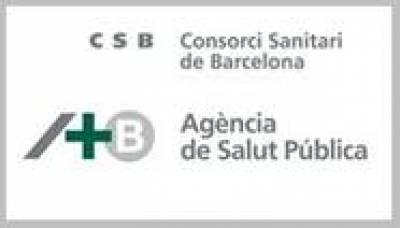Each of the following maps demonstrates the heterogeneous nature of neighbourhoods in Paris in terms of socio-economic characteristics. These maps highlight clear patterns of geographical segregation in Paris, whether one examines social deprivation in the city by unemployment, manual worker density or educational attainment. Social deprivation is concentrated in the Northern and Eastern neighbourhoods of Paris, and contrast with the affluent neighbourhoods located in central, Southern and Western Paris. Socio-economic indicators were derived using data from the 2006 Census provided by the National Institute of Statistics.
The following socio-economic indicator maps are colour coded; high concentrations of a socio-economic characteristic are represented by brown tones, which lighten as the concentration reduces. Intermediate concentrations of a socio-economic characteristic are represented by the white tone. The lowest concentrations are represented by green tones. Sparsely populated or uninhabitable areas were excluded from the analysis, and are shown in stripes. For further information about how these maps were created, please visit the methodological section of the Atlas. Click on each image for a full-screen view of the maps below.
Unemployment
Area Distribution of Unemployment in Paris
This map shows the distribution of unemployment throughout Paris. The highest concentrations of unemployment (shown in dark brown) are located in the outskirts of Paris, particularly in the Northern and Eastern districts, and in a few clusters in the South. The lowest levels of unemployment (shown in dark green) originate in the centre of Paris, and extend to the Western and Southern neighbourhoods. The striped section in the centre of the map, in part marks the Seine River. The Northern bank of the Seine River has a high number of areas with intermediate levels of unemployment (shown in white), which are interspersed between areas of low levels of unemployment. These neighbourhoods on the Northern bank divide the impoverished Northern districts from the affluent southern districts of Paris. Social deprivation, as measured by high unemployment, is clearly concentrated in the Northern and Eastern outskirts of Paris, as opposed to the affluent neighbourhoods in central and Southern Paris.
Manual Workers
Area Distribution of Manual Workers in Paris
This map shows the distribution of manual worker density throughout Paris. The manual worker density map displays the same pattern shown above for unemployment. High concentrations of manual workers (shown by brown tones) are found in the Northern and Eastern districts of Paris, as well as in a few Southern outskirts. The lowest proportions of manual workers are found in the centre of Paris and span to the West and South. Intermediate proportions of manual worker density are more evident in neighbourhoods just north of the Seine River, whilst the lowest concentrations clearly dominate areas South of the Seine.
Primary Education
Area Distribution of Adults with Low Educational Attainment in Paris
This map shows the area distribution of adults that completed formal schooling at the primary level. Patterns shown on this map resemble those demonstrated by manual worker density and unemployment. A high concentration of low educational attainment is shown in the Northern and Eastern districts of Paris. Areas least burdened by low educational attainment are seen from the centre of the city to the West and South of Paris. This map highlights clear segregation in the distribution of low educational attainment throughout Paris.
University Qualifications
Area Distribution of Adults with University Qualifications in Paris
This map shows the area distribution of the proportion of adults who obtained university qualifications in Paris, and as expected, it shows the inverse of the patterns shown above in the map of low educational attainment. Areas with the highest burden of low educational attainment are now shaded in green tones, representing the lowest proportions of university qualifications in these areas. The dark brown areas in Southern and Western districts signify the highest proportions of university qualifications within Paris. Intermediate levels of university qualifications (shown in white) are seen in the North bank of the Seine River. Thus, the North Bank acts as a divide the high proportion of university qualifications in the Centre and South-West from the paucity of qualifications in the Northern and Eastern districts of Paris.
 Close
Close





